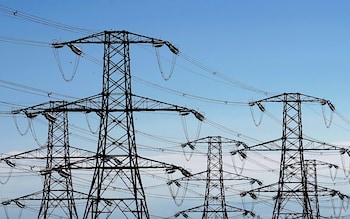Boeing is being sued by American regulators for sharing details of an investigation into the mid-air blowout of a 737 Max plane, as an effort to improve transparency backfired on the business.
The company was accused on Thursday of “blatantly” violating an agreement signed with the US National Transportation Safety Board (NTSB), after bringing in journalists to its Seattle factory for the first time since the crisis erupted.
During the tour, executives revealed that the Jan 5 blowout on a 737 Max 9 plane, operated by Alaska Airlines, happened partly because Boeing workers had failed to fill out an important piece of paperwork.
One insider also blamed the relative inexperience of the company’s workforce since the pandemic, suggesting they were having to “turn baristas into aerospace mechanics” in Seattle.
But on Thursday Boeing was publicly criticised by the NTSB for revealing what it claimed was restricted information to the journalists.
The regulator said: “During a media briefing Tuesday about quality improvements at Boeing Commercial Airplanes, a Boeing executive provided investigative information and gave an analysis of factual information previously released.
“Both of these actions are prohibited by the party agreement that Boeing signed when it was offered party status by the NTSB at the start of the investigation.”
In the accident after take-off from Portland, Oregon, a door plug flew off a 737 Max while the aircraft was at 16,000 feet and climbing – depressurising the cabin and leaving a hole in the side of the fuselage.
The problem has been blamed on the failure of a team of workers to leave a paper trail when they carried out repairs on the door plug, which had faulty rivets.
The door plug was put back on without new rivets – the job of a different team – and fit snugly. But because no paperwork had been lodged, the lack of new rivets was overlooked as the aircraft carried on down the production line.
For the same reason, Boeing said it had proved near-impossible to discover which team had made the serious mistake.
The NTSB lawsuit is a new blow after Boeing opened its factories to unprecedented scrutiny as it seeks to escape the crisis, inviting in 50 journalists from 13 countries.
In two days of briefings in Seattle, executives detailed how a safety plan presented to regulators last month should eliminate work practices that allowed the plane to be delivered to Alaska Airlines with a defect that had been identified but never fixed.
Boeing also unveiled a training programme intended to address concerns that too many of the mechanics who assemble its jets are lacking in aerospace experience, leading to the litany of shop-floor failings identified by safety inspectors in the wake of the Alaska incident.
Charm offensive
The charm offensive was led by Elizabeth Lund – who was appointed to the newly created post of head of quality control in February – together with Katie Ringgold, who took over as head of the 737 programme and manager of the sprawling Renton factory at the same time.
The company acknowledged it became hugely reliant on raw recruits after the pandemic, as demand for planes surged back and not enough skilled workers were available to make them.
Ms Lund said: “The market came back incredibly fast. During this time we were getting people with less experience and in many cases no aerospace experience.”
One Boeing insider characterised the situation in Seattle, America’s coffee capital and the home of Starbucks, as having to turn baristas into aerospace mechanics in a few months.
Compounding the situation was the complexity of Boeing’s procedures, which had been added to over many decades, and build plans that used highly technical terms that were often incomprehensible to the new recruits, many of whom spoke English as a second language.
‘Employees struggling to do jobs correctly’
Ms Lund said: “We knew in 2023 that our employees were getting to the floor and struggling to do the jobs correctly.
“They were telling us, ‘I need more time to be able to participate in the solution, I need some time to really go and work on that.’”
She admitted that getting the 737 Max out to airlines after the 2019 groundings and subsequent disruption by Covid had become something close to an obsession, saying: “We don’t want to disappoint our customers. People are counting on this aeroplane, and we want to get it there. We want to get it to them clean, but we really want to get it.”
Classroom training for staff has now been extended, with formal exams added and a full-scale 737 front section installed where staff are able to experience real-life working conditions rather than practise riveting and wiring only on an artificial board.
Thousands of instructional documents are also being “cleaned up”, Ms Lund said, while AI has been deployed to convert engineer-speak into plain English.
Boeing has also introduced on-the-job training, with every recruit at Renton paired with an experienced mechanic or retired employee brought back to pass on their knowledge.
Boeing boss Dave Calhoun, who was savaged by US senators in a hearing earlier this month, is to stand down by the end of the year after being blamed for failing to deliver on promises to eliminate safety issues.

By throwing open the doors of the Renton site and the nearby Everett wide-body plant, Boeing sought to address accusations that detail is lacking in its safety plan, which has been presented in full to the Federal Aviation Administration (FAA) but made public only in truncated form.
Among measures detailed by Ms Lund was a shifting of final checks on fuselages from Spirit AeroSystems – responsible for the faulty door panel – to the supplier’s factory in Kansas, in an effort to stop defective jets ever entering the Renton assembly line in the first place.
She said that, crucially, there has also been a clampdown on so-called “travellers,” like the Alaska jet, that are allowed to go through final assembly while waiting for faults to be fixed.
The number of such aircraft in Renton is down “by well over 50pc” as Boeing runs all three assembly lines there to provide slack in the system, allowing it to halt the progress of suspect jets without impacting overall production.
She said: “Our rates don’t really require three lines but if a plane needs to sit here the next one can go down the third line. We really didn’t have that strategy across the board before.”
The changes have resulted in an 80pc reduction in defects in aircraft entering final assembly, she said, with the time taken for them to flow through the system also slashed.
The company has also overhauled component control, with unused items now managed by a barcoding system overseen by specialist parts auditors stationed on the production line.

Journalists were able to speak with pre-selected employees on the Renton production line and in the adjoining training centre, though they were asked to limit questions to their specific roles and reserve other topics for management and communications professionals.
Boeing carries out annual media tours of its production facilities, but said the briefing had attracted unprecedented levels of interest in the wake of the near-tragedy on Jan 5.
Ms Lund said: “The fact that one employee could not fill out one piece of paperwork and that this condition could result in an accident was shocking to all of us.”
Boeing immediately ordered end-of-line inspections of critical systems and took 70,000 employees at 20 manufacturing sites off the job for brainstorming sessions that resulted in 30,000 suggestions for improving safety, which informed the announced changes.
Ms Lund pledged that the plan will ensure safe, high quality aircraft, strengthen Boeing’s workforce and culture, restore production stability and deliver on customer commitments.
The real test, however, will come when the FAA removes a cap on production and Boeing is able to more than double current monthly build rates, putting the new system under far more stress than it is now.
Disclaimer: The copyright of this article belongs to the original author. Reposting this article is solely for the purpose of information dissemination and does not constitute any investment advice. If there is any infringement, please contact us immediately. We will make corrections or deletions as necessary. Thank you.



